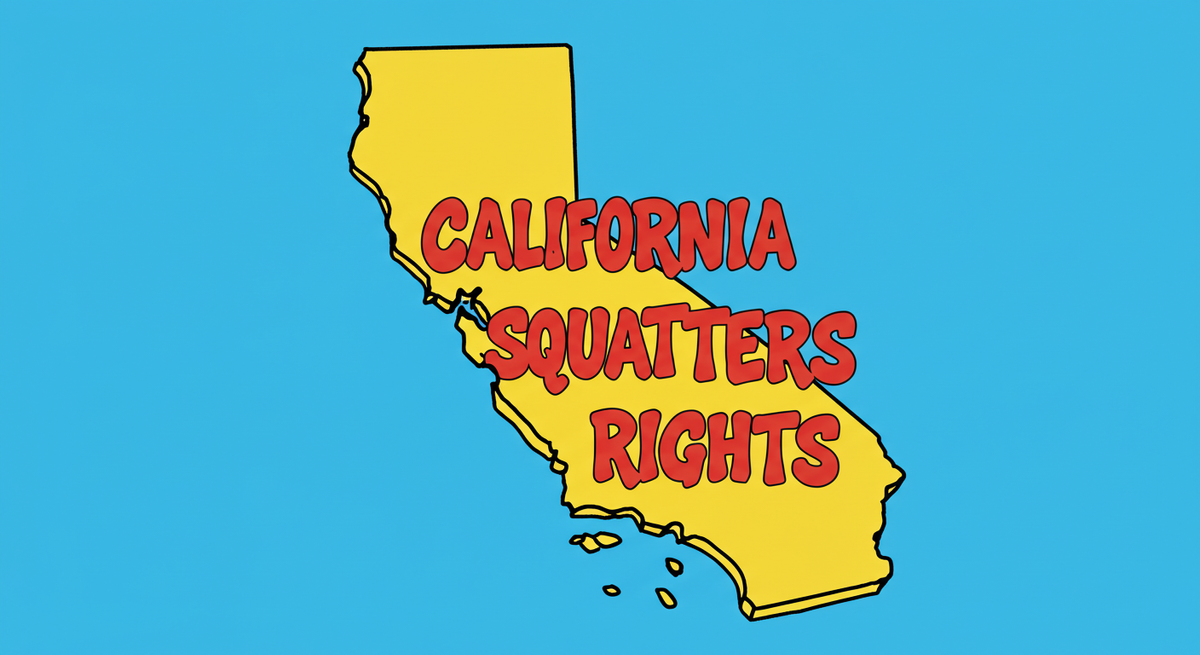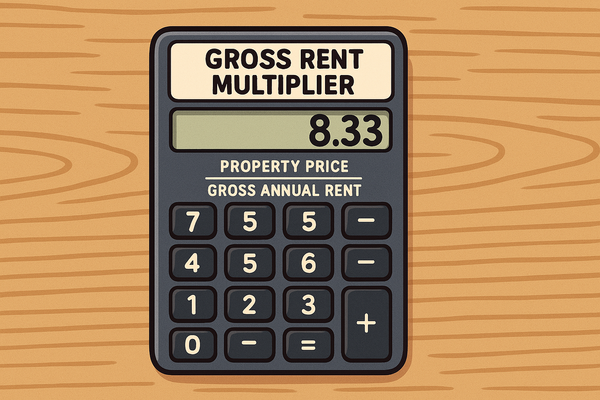California Squatter's Rights Guide: 2025 Laws, Recent Developments, and Property Protection
The new trespassing notice system enables quicker police response to squatting situations without requiring the lengthy civil court process previously necessary.

A squatter is someone who occupies a property without the owner's permission and may eventually claim legal ownership. In California, this issue has gained significant attention with recent legislative changes, particularly the implementation of new trespassing notice systems that have modified how unauthorized property occupation is handled in the state.
If you are a property owner, property manager, or landlord in California, you'll want to have a clear understanding of squatter's rights laws so that you can protect your investment and prevent potential loss of property through adverse possession claims.
Key Takeaways
- California requires squatters to occupy property continuously for 5 years before they can file an adverse possession claim
- The new trespassing notice system in California allows property owners to file a notice with local police that remains valid for one year
- Squatters must pay property taxes throughout their occupation period to make a valid adverse possession claim
- California has extended eviction timelines with 90-day notice periods before initiating formal proceedings
- Regular property monitoring and security measures are the best prevention against squatters
- California's approach remains more tenant-friendly compared to states like Florida and Texas
While California law states that an individual may attempt to gain title and ownership of a property through adverse possession after residing there for five years, recent legislative changes have provided property owners with additional tools to combat unauthorized occupants.
The new trespassing notice system enables quicker police response to squatting situations without requiring the lengthy civil court process previously necessary. However, eviction timelines have been extended, potentially allowing squatters to legally occupy properties for longer periods before formal eviction can begin.
Understanding California Squatter Rights in 2025
In California, squatting itself is not legal, though squatters have certain rights through the doctrine of adverse possession. This legal principle allows individuals who occupy abandoned or neglected property without permission to potentially gain legal ownership after meeting specific conditions over a designated period.
It's important to understand the distinction between squatting and trespassing. While trespassing is a criminal offense that involves entering property without permission, squatting typically involves a person living on a property for an extended period without authorization. The distinction becomes important in how law enforcement can respond to each situation.
With the implementation of the new trespassing notice system, California has begun to shift from treating their squatting laws as a purely civil matter to one with potential criminal implications, though the state's approach remains more tenant-friendly than some others.
California Adverse Possession Requirements
For a squatter to claim legal ownership through adverse possession in California, they must satisfy five specific legal requirements:
Hostile Possession
The occupation must be without the owner's consent and contrary to the owner's interests. This doesn't necessarily imply aggression but rather indicates the occupation is without permission.
Actual Possession
The squatter must physically use the property as an owner would, such as living on it or making improvements. This demonstrates genuine occupation rather than just occasional use.
Open and Notorious Possession
The occupation must be open and obvious, putting both the owner and the public on notice regarding the squatter's presence. Secret or hidden occupation doesn't qualify.
Continuous Possession for 5 Years
The squatter must occupy the property without interruption for at least five years. Any significant breaks in occupation will reset the clock on the adverse possession timeline.
Payment of Property Taxes
The squatter must pay all property taxes due during their occupation period. This requirement is relatively uncommon among states and creates an additional hurdle for adverse possession claims in California.
These requirements establish a high bar for successful adverse possession claims. The squatter must provide consistent and verifiable evidence, including proof of property tax payments and continuous occupation, to support their claim.
Recent Changes to California Squatter Laws
California has introduced several new laws and modifications that impact how landlords can deal with squatters.
New Trespassing Notice System
State Senator Bob Archuleta successfully pushed through a new law allowing property owners to file a no-trespass notice with local police. This notice remains valid for one year and gives law enforcement the authority to respond to unauthorized occupants because it establishes on record that no one is permitted to occupy the building.
This law represents a significant improvement for property owners, as it enables quicker police response to squatting situations without requiring the lengthy civil court process that was previously the only recourse.
Extended Eviction Timelines
As of 2025, California has extended notice periods for evicting unauthorized occupants. Many landlords are now required to provide at least a 90-day notice before initiating formal eviction proceedings, compared to previous 30- or 60-day requirements. This change means that squatters could legally occupy properties for an extended period before an eviction can officially begin.
In terms of being a squatter friendly state, this extension puts the state of California more on par with states like Arizona, and is a clear departure from the direction that states like Arkansas, Florida and Texas have recently gone when it comes to squatters rights.
AB 2347 Modifications
Assembly Bill 2347 introduces substantive changes to eviction processes in California, affecting landlord-tenant procedures across the state. The legislation modifies Sections 1167 and 1170 of the Code of Civil Procedure, establishing new timelines that affect the entire unlawful detainer process.
Key changes include:
- Extended response window from 5 days to 10 court days (excluding weekends and judicial holidays)
- Additional 5 court days for service through mail or confidentiality programs
- Enhanced requirements for filing demurrers and motions to strike
Prevention Strategies for California Landlords
Preventing squatting is significantly easier and less costly than removing squatters. Here are effective strategies California landlords can implement:
Regular Property Monitoring
Periodic inspection is essential, especially for vacant or infrequently used properties. Regular visits allow you to quickly identify any signs of unauthorized occupation before squatters can establish a prolonged presence.
Property Security Measures
Install proper security measures including:
- Secure fencing around the property perimeter
- Quality locks on all doors and windows
- Security cameras or alarm systems
- Adequate lighting around the property
Legal Signage
Post appropriate signage on your property:
- "No Trespassing" signs in visible locations
- "Right to pass by permission" signs under Civil Code section 1008 (these specifically help defeat the "hostile" element required for adverse possession claims)
Documentation and Tax Compliance
Maintain clear documentation of property ownership and ensure timely payment of all property taxes. Since tax payment is a requirement for adverse possession claims, keeping your tax obligations current prevents squatters from fulfilling this criterion.
Regular Property Maintenance
Well-maintained properties are less attractive to squatters. Regular upkeep signals that the property is being actively managed and monitored, deterring potential unauthorized occupants.
Written Agreements
If you lease your property, maintain clear written agreements that define tenancy terms, boundaries, and expectations. This documentation helps differentiate between legitimate tenants and squatters.
Removing Squatters from Your California Property
If prevention fails and squatters have already occupied your property, you must follow specific legal procedures to remove them:
The California Eviction Process for Squatters
- Serve a Formal Eviction Notice: California law requires you to provide one of the following notices:
- Three-day pay or quit notice (for nonpayment)
- Three-day cure or quit notice (for lease violations)
- Three-day unconditional notice to quit (for illegal activity)
- File a Complaint: If the squatter refuses to leave after the notice period expires, file a complaint for unlawful detainer in California Superior Court.
- Court Summons: The court will issue a summons that must be served to the squatter by the sheriff or another authorized process server.
- Response Period: Under the new AB 2347 regulations, squatters have 10 court days to file an answer with the court, extended from the previous 5-day window.
- Court Hearing: If the squatter responds, a hearing will be scheduled within 20 days. If they don't respond, you may request an immediate order of possession.
- Judicial Ruling: If the judge rules in your favor, present this judgment to the local sheriff, who will serve the squatter with a Writ of Execution.
- Final Removal: The squatter will have five days to vacate after the writ is posted. If they fail to leave, they will be forcibly removed by law enforcement.
Utilizing the New Trespassing Notice System
Take advantage of the recently implemented system that allows property owners to electronically file a notice of trespassing with local sheriff's departments. This facilitates the eviction process by establishing clear documentation that the occupants are unauthorized.
Professional Assistance
Consider hiring professionals who specialize in dealing with squatters:
- Real estate attorneys experienced in eviction law
- Services like "Squatter Squad" that confront squatters professionally (starting at $2,500)
- "The Squatter Hunter" approach, where professionals obtain a lease to the property and then legally assert their rights against the squatters
California vs. Other States: Adverse Possession Comparison
California's approach to adverse possession differs significantly from many other states, particularly regarding the time requirement and specific conditions. Understanding these differences is crucial for property investors who may own real estate across multiple jurisdictions.
Time Requirements Across States
The statutory period required for adverse possession varies significantly across the United States. California's five-year requirement is among the shortest timeframes nationally, making it particularly important for property owners to be vigilant.
| State | Required Occupation Period | Tax Payment Required |
|---|---|---|
| California | 5 years | Yes |
| Florida | 7 years | Yes |
| Texas | 10 years (3 with deed) | Yes |
| New York | 10 years | No |
| Georgia | 20 years (7 with deed) | Yes |
| Alabama | 10 years (color of title) | Yes |
| Colorado | 18 years (7 with deed) | No |
| Oregon | 10 years | No |
| Washington | 10 years | No |
| Illinois | 20 years (7 with deed) | Yes |
California's Distinctive Requirements
California's requirement for payment of property taxes throughout the occupation period is relatively uncommon among states and creates an additional hurdle for adverse possession claims. Many states focus primarily on the duration and nature of possession without explicitly requiring tax payment.
Recent Legal Trends
While California has implemented some measures to assist property owners (like the no-trespass notice system), the state generally maintains stronger tenant protections than many other states. Florida and Texas, for example, have enacted legislation allowing police to immediately evict squatters who don't have a valid lease, representing a more landlord-friendly approach than California's.
Real-World Examples and Implications
Case Studies: California Squatter Situations
Case 1: Los Altos Luxury Home
Situation: In 2018, a California court awarded ownership of a $4 million Los Altos home to a couple who had been squatting there for over 5 years.
Key Factors: The couple had meticulously paid all property taxes, maintained the property in excellent condition, and established clear evidence of continuous occupation. The original owner had abandoned the property following financial difficulties and made no attempt to reclaim it during the statutory period.
Outcome: The court ruled that all five elements of adverse possession had been satisfied, transferring legal title to the squatters after their five-year occupation.
Lesson: This case underscores the importance of regular property monitoring, especially for high-value real estate. Even a single year of neglect can contribute to a potential adverse possession claim in California.
Case 2: San Francisco Failed Claim
Situation: In 2017, a homeless man attempted to claim adverse possession of a $2 million San Francisco home but was ultimately removed by court order.
Key Factors: While the individual had occupied the property for nearly six years, he failed to pay property taxes and could not provide evidence of "open and notorious" possession that would have put the community on notice of his occupancy claim.
Outcome: The court rejected the adverse possession claim due to failure to satisfy all required elements, particularly the tax payment requirement.
Lesson: California courts strictly enforce all five elements of adverse possession, creating significant barriers to successful claims when property owners contest them appropriately.
Landlord Rights and Responsibilities
As a property owner in California, you have specific rights and responsibilities regarding squatters:
Rights:
- File a no-trespass notice with local police that remains valid for one year
- Pursue traditional eviction procedures for unauthorized occupants
- Seek damages for property destruction or unauthorized modifications
- File trespassing charges in appropriate circumstances
- Maintain and protect your property from unauthorized entry
Responsibilities:
- Follow legal procedures for removal rather than attempting "self-help" evictions
- Distinguish between squatters and legitimate tenants with legal disputes
- Properly document ownership and unauthorized occupation
- Provide appropriate notices before initiating eviction proceedings
- Secure property after removal to prevent reoccupation
Understanding these rights and responsibilities helps ensure that you address squatter situations legally and effectively while avoiding potential liability for improper removal procedures.
Tenant vs. Squatter: Legal Distinctions
It's crucial to understand the legal difference between a tenant and a squatter, as the removal processes differ significantly:
Tenants:
- Have lawful permission to occupy the property through a formal or informal agreement
- Pay rent (though may be behind on payments)
- Have established rights under California landlord-tenant laws
- Must be removed through formal eviction proceedings
- Include former tenants whose leases have expired but continue to occupy the property
Squatters:
- Never had lawful permission to occupy the property
- Entered the property without authorization
- Pay no rent and have no rental agreement
- Can potentially be removed through the new trespassing notice system
- Have no legitimate claim to tenancy rights
Key Distinctions in Documentation:
- Tenants have lease agreements, rent receipts, or evidence of payment
- Squatters typically cannot produce legitimate documentation of occupancy rights
- Property owners should maintain records that clearly establish who is authorized to occupy their properties
Properly identifying whether an occupant is a tenant or squatter is essential for determining the appropriate legal process for removal and avoiding potential legal complications.
Legal Help for California Property Owners
Navigating squatter situations may require professional legal assistance. Here are resources for California property owners:
Types of Legal Professionals:
- Real estate attorneys: Specialize in property law and can guide you through removal processes
- Property management companies: Often have legal departments experienced in handling unauthorized occupants
- Eviction services: Specialized companies that manage the eviction process for a fee
Cost Expectations:
- Legal consultation: $250-550 per hour
- Unlawful detainer filing: $400-600 plus court costs
- Complete eviction services: $1,200-3,000 depending on complexity
- Sheriff's fees for enforcement: Varies by county
Timeline Considerations:
- Trespassing notice system: Potentially facilitates quicker response from law enforcement
- Traditional eviction: 4-8 weeks depending on court scheduling and tenant response
- Adverse possession defense: Several months if litigation is required
Resources and Referrals:
- California Bar Association Referral Service
- County Property Assessor's Office
- Local Sheriff's Office
- California Department of Revenue (for adverse possession filings)
Consulting with a qualified attorney early in the process can help prevent costly mistakes and ensure you follow the proper legal procedures for your specific situation.
Frequently Asked Questions
General Squatter Rights Questions
Q: What are squatter's rights in California? A: Squatter's rights refer to adverse possession laws that potentially allow someone to claim ownership of property after occupying it openly, continuously, and without permission for five years while meeting specific legal requirements including payment of property taxes.
Q: Is squatting illegal in California? A: Yes, unauthorized occupation of property is illegal in California. Recent legal changes have strengthened property owners' ability to respond to squatting situations, though the state's approach remains more tenant-friendly than some others.
Q: How long does someone have to squat on property in California to claim ownership? A: In California, a squatter must continuously occupy a property for five years before they can file an adverse possession claim. They must also meet several other requirements, including paying property taxes.
Q: Do squatters have to pay property taxes in California? A: Yes. To make a valid adverse possession claim in California, squatters must pay all property taxes during their occupation period.
Prevention and Removal
Q: How can I prevent squatters from occupying my property? A: Regular property inspections, security systems, property maintenance, "No Trespassing" signs, and professional property management are effective prevention strategies.
Q: How do I remove squatters from my property in California? A: The new trespassing notice system allows property owners to file a notice with local police. If this doesn't apply or is insufficient, traditional eviction procedures must be followed.
Q: Can I physically remove squatters myself? A: No. Self-help evictions are illegal in California. Property owners must use legal processes, either through the trespassing notice system or formal eviction procedures, to remove unauthorized occupants.
Q: Can I turn off utilities to force squatters to leave? A: No. Turning off utilities is considered a self-help eviction tactic and is illegal in California. This could potentially expose you to legal liability.
Legal Implications
Q: What is the new trespassing notice system in California? A: This system allows property owners to file a no-trespass notice with local police that remains valid for one year, giving law enforcement the authority to respond to unauthorized occupants more efficiently.
Q: How does California's approach to squatters differ from other states? A: California's 5-year requirement is shorter than many states (like Florida's 7 years or Texas's 10 years). California also requires payment of property taxes but generally maintains stronger tenant protections than states like Florida and Texas.
Q: What's the difference between a squatter and a trespasser? A: Trespassing is a temporary unauthorized entry, while squatting involves sustained occupation of a property. Trespassing is immediately addressed as a criminal matter, while squatting has historically been treated as a civil issue, though this is beginning to change.
Special Situations
Q: What if the squatter was previously a tenant? A: If the occupant was previously a legitimate tenant, they must be removed through traditional eviction procedures rather than the expedited trespassing notice system.
Q: What if I'm buying a property with squatters already living there? A: The purchase should be contingent on the removal of unauthorized occupants. The current owner should complete the removal process before closing, or you should consult with an attorney about assuming this responsibility.
Q: What if squatters damage my property? A: Document all damage with photographs and detailed descriptions. You may pursue civil remedies for financial compensation.
Q: What properties are most likely to attract squatters? A: Vacant, abandoned, or foreclosed properties are most vulnerable, particularly those that appear unmonitored or neglected. Vacation homes and investment properties that sit empty for extended periods are also at higher risk.
Conclusion
California's approach to squatter's rights has evolved, with the new trespassing notice system representing a step toward strengthening property owners' rights while maintaining the historical legal doctrine of adverse possession under strictly defined circumstances.
The five-year timeframe for adverse possession claims remains in place, but the improved trespassing notice system provides property owners with more efficient remedies against unauthorized occupation. However, extended eviction timelines may complicate the removal process in some cases.
For property owners, the keys to protecting your investment include:
- Regular monitoring and maintenance of properties
- Prompt action if unauthorized occupants are discovered
- Following legal procedures rather than self-help eviction measures
- Maintaining comprehensive documentation of ownership and property conditions
- Considering professional property management for vacant properties
By understanding California's squatter rights laws and taking preventive measures, property owners can significantly reduce their risk of unauthorized occupation and potential adverse possession claims.
Resources and References
- California Legislative Site
- California Code of Civil Procedure § 325: Adverse Possession
- Search for "Code of Civil Procedure Section 325"
- California Civil Code § 1008: Right to Pass by Permission
- Look for "Civil Code Section 1008" in their search function
- Assembly Bill 2347: Eviction Process Modifications
- Search for "AB-2347" in their bill search feature
- California Code of Civil Procedure § 325: Adverse Possession
Disclaimer: This article provides general information and does not constitute legal advice. Consult with a qualified attorney for guidance on your specific situation.





